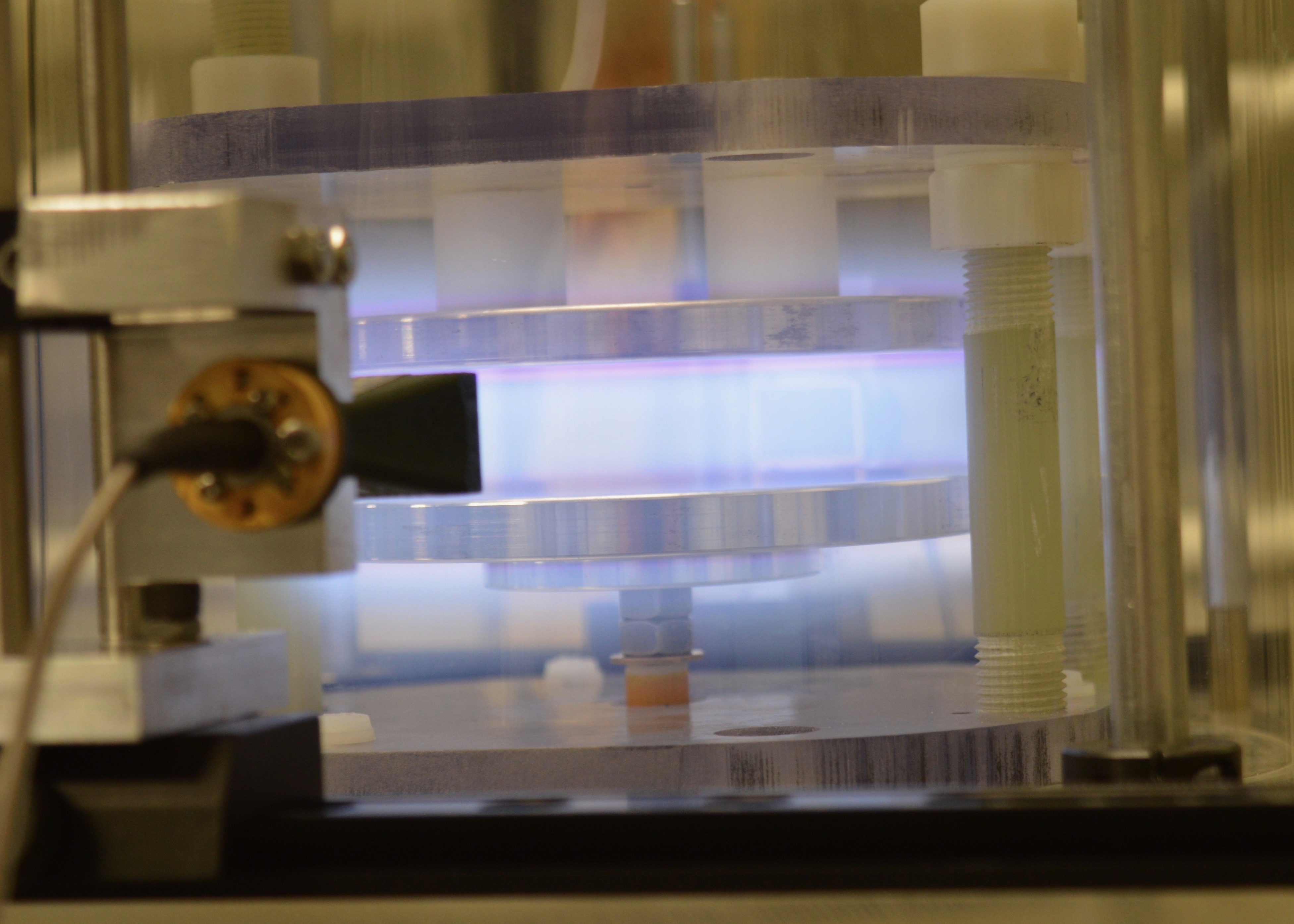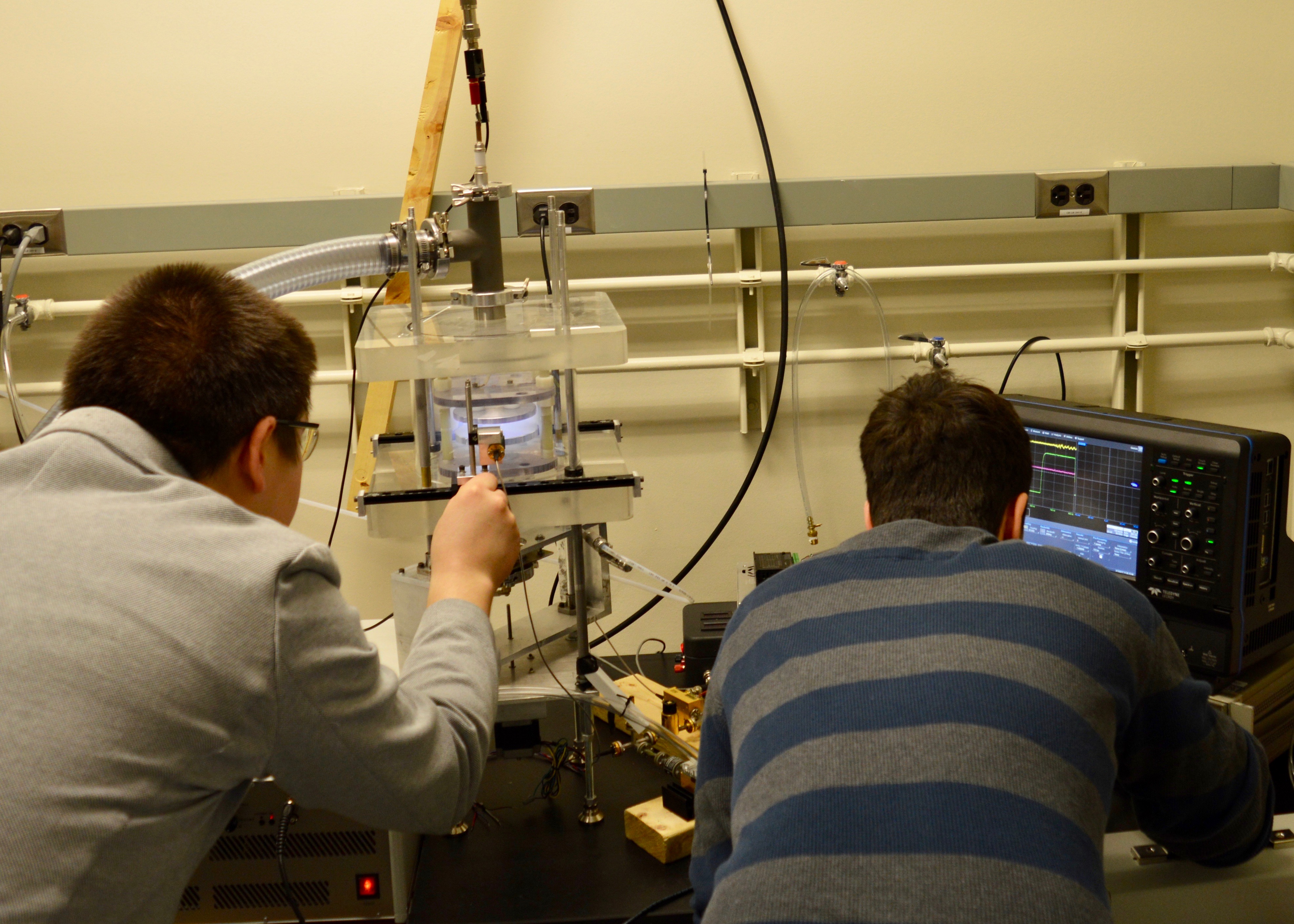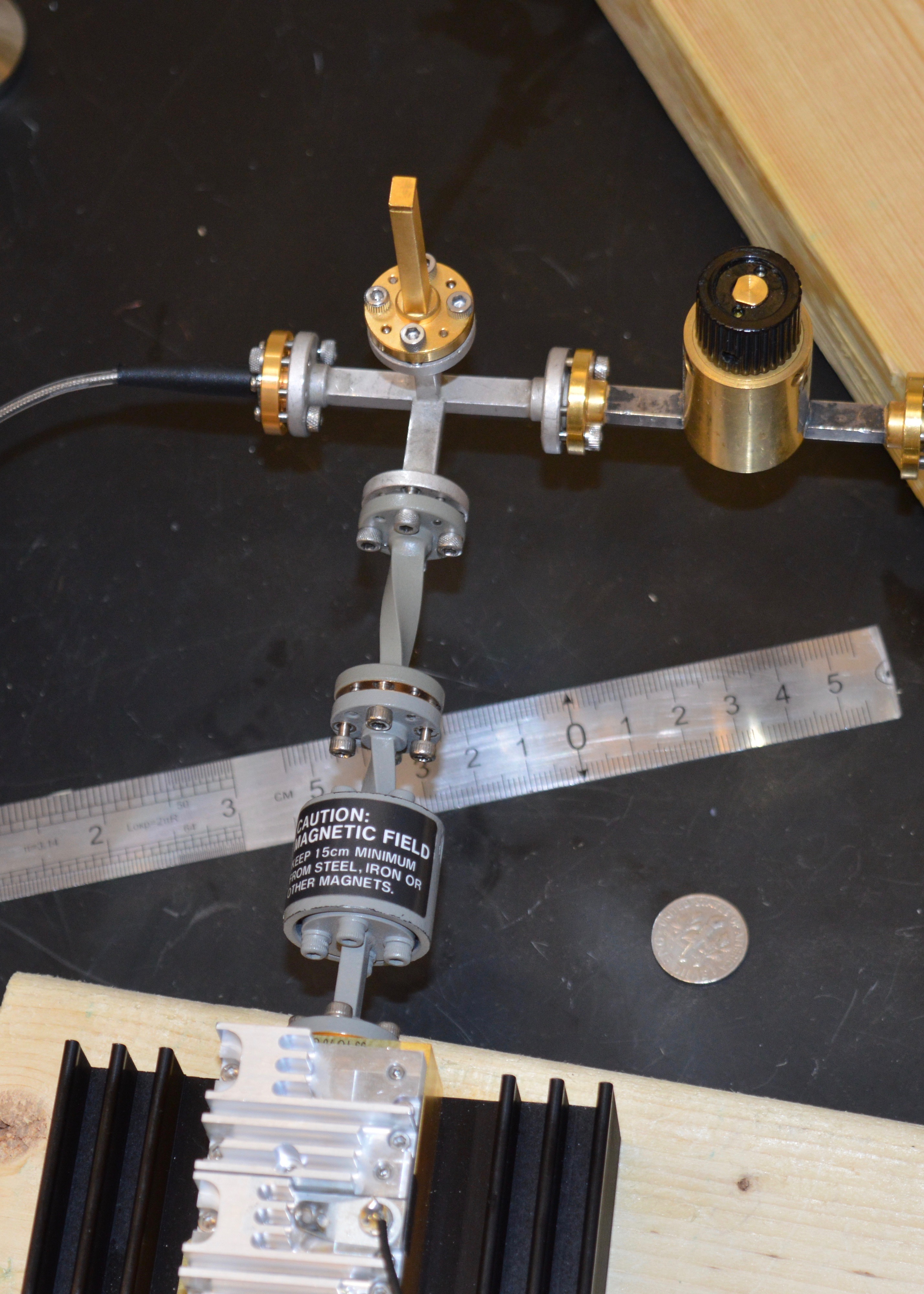Antennas from Lightning Bolts

Can a lightning bolt act as an antenna? Any electrical conductor, even an ionized gas or plasma, can be used as a radio-frequency circuit. Professor Sergey Macheret’s research team is exploring the use of low-temperature plasmas as antennas.
The main benefit of plasma antennas is rapid reconfiguration. Altering the properties of the discharge can turn the antenna on or completely off, and adjust it over a broad range of frequencies and directions. With no solid conducting body, the antenna simply disappears when turned off, making it extremely resistant to electromagnetic attack. Being completely adjustable, it is also very hard to jam.
Ph.D. student Vlad Podolsky is working to make these antennas a practical reality. Podolsky came to Purdue from USC about two years ago, specifically to help Prof. Macheret start the new Cold Plasma Preeminent Team. “I wanted to get that experience of learning to set up a lab,” he says, “so that if I want to be a professor in the future, I have insight into doing that.”
Postdoctoral researcher Andrey Khomenko has just joined the cold plasmas team. He earned his Ph.D. from the Moscow Institute of Physics and Technology, and worked previously at the Kurchatov Institute, Russia’s leading research and development institute for nuclear energy. He has only been in the United States for a couple of weeks, but he is eager to get to work and publish papers on this cutting-edge topic. Khomenko’s specialty is chemical physics, a field that studies chemical processes from a physics perspective, and helps us understand the highly reactive substances that form in an electrical discharge.


The researchers have constructed a small vacuum chamber where they can create pulsed electrical discharges at different pressures with a variety of gases. Their pulsers, made by FID Technology, are unusual, highly-sophisticated devices that provide one-thousand volt, two-nanosecond pulses, at three megahertz repetition rate. This exotic equipment can generate low-temperature plasmas extremely efficiently.
Microwave interferometry measurements of electron number density and electron temperature will characterize the discharges. The researchers are searching for a regime where the electromagnetic noise generated by random motion of electrons (floor noise) is small. “The ultimate application is to try to use it as a reconfigurable plasma antenna, and antennas are very sensitive to their floor noise,” says Podolsky. “Basically, what we want to show is that plasma antennas can give you the same floor noise as conventional metals.”
There is much work ahead to prove their point about plasma antennas, but in the meantime, the researchers offer a lab visitor an impressive light show of eerie purple and blue discharges.